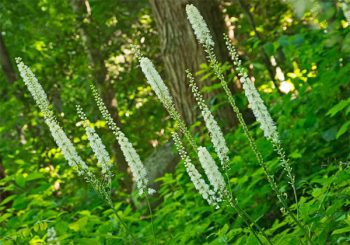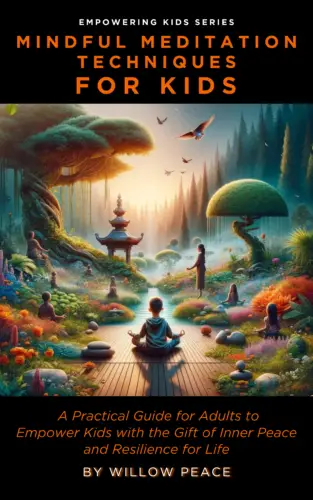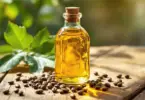 By Nick Polizzi
By Nick Polizzi
Guest Writer for Wake Up World
Growing up, I was fascinated by the hundreds of interesting plants that grew in the forests behind my childhood home in rural Connecticut. We would wander down old forgotten trails for hours, lost in the greenery and enchanted by the timelessness of the place.
I would later come to realize that these old woods are home to one of the most extensive systems of indigenous medicine in the world.
We now know that the original inhabitants of North America were extremely advanced, far beyond what our textbooks and cowboy movies would have us believe. One need only examine the hundreds of gigantic temple mounds that still stand, from the southern Mississippi Valley all the way up into the Great Lakes region, to understand the hidden capability of these cultures. According to respected archaeologists, the first of these mind boggling earth works was constructed 1,000 years before the Great Pyramids of Egypt!
Perhaps the clearest window into the highly evolved technologies that Native American communities possess is their back-of-the-hand familiarity with the medicines of the forest. In fact, the early explorers of the new world relied heavily upon indigenous herbals and would not have survived without them.
Known for unprecedented generosity to strangers, tribal elders often shared this knowledge with European trappers and frontiersmen with little to no expectation of compensation. Plant wisdom was not seen as a possession to be hoarded or leveraged for personal gain. One’s intimate understanding of both plant and man came with a built-in responsibility to use these tools for the benefit of all – even the odd pale-skinned newcomers from the east.
A far cry from our patent-crazed pharmaceutical system of today right?
I tread very lightly on this sacred topic out of deep respect for the richness of each native tribe that lives, or has lived on this continent. Each group has their own distinct medicine tradition and too often they are lumped together under one homogenized label. We never share indigenous herbal knowledge without the express permission of the healer and their community to do so.
Also important: Because of over-harvesting and deforestation, many North American herbs including American Ginseng (below), are now endangered in certain regions. When seeking out these powerful plants, please make sure to source them from a conscious and sustainable outfit. For more information on how to safely harvest and protect the precious herbs of the world, visit the hard working community at United Plant Savers (www.unitedplantsavers.org)
Without further ado – the three Native American herbs below were shared with foreign settlers centuries ago and are still widely used because of their effectiveness. They are shining examples of the extraordinary contribution that the native civilizations of North America have made to herbal and clinical medicine.
“All plants are our brothers and sisters.
They talk to us and if we listen, we can hear them.”— Arapaho Proverb
American Ginseng: Panax quinquefolius
When many of us think of ginseng our minds immediately leap across the Pacific Ocean to Asia, but an equally potent version of this plant has been used here in North America for thousands of years. The Seneca celebrate American Ginseng as one of the five most valuable plant medicines, and are not alone in their sentiments.
Like so many other herbs, French traders in Quebec quickly recognized American ginseng for its medicinal value and began purchasing large quantities back in the 1600 and 1700s.
What it’s good for:
Unlike the Asian variety which warms and stimulates the body (promoting the “yang” – or masculine forces within us), American ginseng does quite the opposite. Known for its cooling properties, American ginseng is often used to stabilize fever, reduce swelling, and flush out the digestive tract.
The Cherokee, Mohegan, and Potawatomi often dried the herb and brewed it into therapeutic teas. Known as a robust adaptogen, it has been shown to reduce many types of stress – both physical and mental.
“Panax”, the first word in its latin name, comes from the Greek word for panacea, meaning “all healing”. High praise is built right into the title!
Goldenseal: Hydrastis Canadensis
Called the “universal herb” for over 300 years, the goldenseal is a perennial that thrives in the forests of Ohio, Indiana, Kentucky, and West Virginia – particularly in the Appalachian region. It was most likely introduced to early colonists by the Iroquois and its use as a medicinal has spread like wildfire since then.
What it’s good for:
True to its reputation as the “universal herb”, goldenseal was used in a wide variety of applications. It was highly favored as a diuretic, liver cleanser, and was commonly infused in cold water to treat sore or itchy eyes. The Catawbas boiled the root and drank its tea to alleviate jaundice, stomach ulcers, and cold sores.
If you’re feeling adventurous – the Cherokee were known to grind the root into a powder and mix it with bear grease to create an insect repellent. The bear grease can be substituted with other vegetable based oils!
Black Cohosh: Actaea racemosa
Also known as “black snakeroot”, the black cohosh is a tall, white flowered plant that is quite common in the woodlands of the Lake Ontario region all the way down to Georgia. The word “cohosh” comes from the Algonquin term for “rough”, which is a reference to the plant’s gnarled root structure. This subterranean portion of the plant, or rhizome, is where the medicine is in this herb.
What it’s good for: The black cohosh has been a go-to remedy in women’s health for centuries. It is used by Native American healers to treat menstrual cramps, sooth hot flashes, and alleviate post-menopausal depression.
Lately, black cohosh has become a popular herbal supplement in health food stores and many claim it has even broader applications, although these have not been scientifically proven yet.
Interesting fact: Both goldenseal and the black cohosh are in the buttercup family!
I hope you find the herbs above to be of benefit to yourself and your loved ones. Again, we carry a deep respect for the native cultures who brought us this vital knowledge and are honored to be in a position to pass it along to you.
Stay curious,
Nick Polizzi
Founder, The Sacred Science
Recommended articles by Nick Polizzi:
- The Power of Fasting
- How to Detox Your Body With Oil Pulling
- The Dalai Lama’s Morning Prayer
- Three Ancient Beauty Secrets You’ve Never Heard Of
- Jesus Did It, Buddha Did It, Muhammad Did It – The Healing Tradition of Fasting
- The Art of Smudging: A Shamanic Cleansing Ritual
- Sacred Science: A Jungle Healing Technique You Can Use Anywhere
- Wired for Tribe
- 3 Wild Herbs for Lucid Dreaming
- Eye Gazing — An Exercise for Soul Vision
- A Sunrise Prayer to Start Your Day
- A Native Smoke Ritual For Renewal and Clarity
- 3 Ancient Medicines That Already Live In Your Home
- A Breathing Exercise to Take You Higher
- A Healing Soup Recipe to Warm Your Soul
About the author:
 Nick Polizzi has spent his career directing and editing feature length documentaries about natural alternatives to conventional medicine.
Nick Polizzi has spent his career directing and editing feature length documentaries about natural alternatives to conventional medicine.
For more, visit www.thesacredscience.com (where this article first appeared.)
What if slowing down could improve your energy, health, and relationships? In this free online event, you’ll learn how The Slow Method — rooted in Qigong, Taoist philosophy, and breathwork — helps reduce stress, boost vitality, and create a sense of peace in your daily life.
Through guided Qigong practices, you’ll discover how to activate your body’s natural healing abilities, improve emotional balance, and even slow the aging process. Slowing down doesn’t mean falling behind — it’s a powerful way to regain clarity, connection, and energy.
Join this transformative workshop and experience how simple practices can change your life. Sign up for free now and discover the counterintuitive path to healing and vitality.
 If you’ve found value in our articles, we’d greatly appreciate your support by purchasing Mindful Meditation Techniques for Kids—A Practical Guide for Adults to Empower Kids with the Gift of Inner Peace and Resilience for Life.
If you’ve found value in our articles, we’d greatly appreciate your support by purchasing Mindful Meditation Techniques for Kids—A Practical Guide for Adults to Empower Kids with the Gift of Inner Peace and Resilience for Life.
In the spirit of mindfulness, we encourage you to choose the paperback version. Delve into its pages away from screen glare and notifications, allowing yourself to fully immerse in the transformative practices within. The physical book enriches the learning process and serves as a tangible commitment to mindfulness, easily shared among family and friends.
Over the past few years, Wake Up World has faced significant online censorship, impacting our financial ability to stay online. Instead of soliciting donations, we’re exploring win-win solutions with our readers to remain financially viable. Moving into book publishing, we hope to secure ongoing funds to continue our mission. With over 8,500 articles published in the past 13 years, we are committed to keeping our content free and accessible to everyone without resorting to a paywall.







